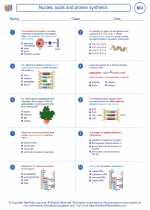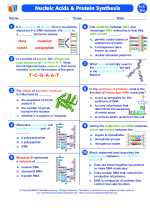Rusts: A Biology Study Guide
What are rusts?
Rusts are a group of fungal plant diseases that are caused by members of the Pucciniales order. These fungi are parasitic and often have a characteristic rusty brown color, which gives them their name. Rusts can infect a wide range of plant species, including agricultural crops and ornamental plants.
Life cycle of rusts:
Rusts have a complex life cycle that typically involves two different host plants. The fungus produces spores that can travel long distances through the air, water, or on infected plant material. When these spores land on a suitable host plant, they germinate and infect the plant, leading to the development of characteristic rust-colored pustules on the plant's surface. These pustules release more spores, which can then spread the infection to other plants.
Impact of rusts:
Rusts can have significant economic and ecological impacts. In agriculture, rusts can reduce crop yields, decrease the quality of harvested produce, and increase production costs due to the need for fungicidal treatments. In natural ecosystems, rusts can affect the health of plant populations and alter the dynamics of plant communities.
Management and control:
Management of rusts often involves a combination of cultural, biological, and chemical control methods. These can include practices such as crop rotation, planting resistant varieties, using fungicides, and maintaining proper plant nutrition and spacing to reduce the risk of infection.
Study guide questions:
- What are rusts and which group of fungi do they belong to?
- Describe the life cycle of rusts, including the role of spores and host plants.
- Discuss the impact of rusts on agriculture and natural ecosystems.
- Explain different methods for the management and control of rusts.
◂Biology Worksheets and Study Guides High School. Nucleic acids and protein synthesis

 Worksheet/Answer key
Worksheet/Answer key
 Worksheet/Answer key
Worksheet/Answer key
 Worksheet/Answer key
Worksheet/Answer key
 Vocabulary/Answer key
Vocabulary/Answer key
 Vocabulary/Answer key
Vocabulary/Answer key
 Vocabulary/Answer key
Vocabulary/Answer key
